All issues

Volume 46 (2005)
- Issue 4 Pages 237-
- Issue 3 Pages 167-
- Issue 2 Pages 105-
- Issue 1 Pages 1-
Volume 46, Issue 4
Displaying 1-5 of 5 articles from this issue
- |<
- <
- 1
- >
- >|
-
Masaki Nishio, Eiji Shimura2005 Volume 46 Issue 4 Pages 237-244
Published: October 20, 2005
Released on J-STAGE: June 22, 2010
JOURNAL FREE ACCESSThe relationship between spontaneous speech in a natural setting and speech performed with the speaker applying his (or her) best effort in a speech therapy class was examined in 97 individuals with dysarthria. The results are outlined below:
1. Regardless of the type of dysarthria, type of treatment administered, or level of intelligibility, speech intelligibility invariably deteriorated more in an everyday setting than in a therapy session.
2. Individuals with flaccid, spastic, ataxic as well as UUMN dysarthria were all aware that the intelligibility of their speech deteriorates more in actual communication than in a therapy session.
3. Generally speaking, in both spontaneous speech and speech made with effort, the subjects were somewhat objectively conscious of the intelligibility of their speech.
4. No correlations were found between differences in intelligibility of the two speech types described above and MMSE, desire for continued speech therapy, satisfaction with the treatment, age, or the number of months spent in training. Also, there was no genderrelated difference.
Based on the results summarized above, we conducted a study on the clinical strategy needed for bringing the same level of speech made with effort in a therapy situation to spontaneous speech made in a real-life situation.View full abstractDownload PDF (1200K) -
Etsuyo Tamura, Hiroyuki Fukuda, Toshiyuki Kusuyama, Hideki Nakagawa2005 Volume 46 Issue 4 Pages 245-250
Published: October 20, 2005
Released on J-STAGE: June 22, 2010
JOURNAL FREE ACCESSAutogenous fat augmentation for glottic insufficiency has commonly been administered in patients with vocal fold paralysis. The purpose of the present study was to evaluate the efficiency of autologous fat injection for cases of deficiency of glottal closure such as sulcus vocalis, laryngeal trauma and postoperative scarring.
Fat injection was performed on 4 cases of sulcus vocalis and 3 cases of postoperative scarring with laryngeal trauma. Phonatory function and videolaryngostroboscopic data were evaluated before and after the augmentation.
After the operation, improvement in wave motion during phonation was observed. Also, in many cases, maximum phonation time was extended. Even in cases where phonation time was not extended, ease of phonation was subjectively recognized.
The results of the study suggest that autogenous fat injection may be effective for rehabilitation of glottal closure deficiencies such as sulcus vocalis. However, in some cases with postoperative scarring, effectiveness after injection was not satisfactory. In addition to the injection, consideration should be given to correction of the mucous membrane. Regarding the duration of efficacy after injection, further study is necessary to permit more careful observation.View full abstractDownload PDF (9571K) -
Yasushi Fujimoto, Yasuhisa Hasegawa, Ikuo Hyodo, Hiroko Yamada, Atsush ...2005 Volume 46 Issue 4 Pages 251-256
Published: October 20, 2005
Released on J-STAGE: June 22, 2010
JOURNAL FREE ACCESSObjective: Based on previous studies, factors affecting postoperative function include not only extent of surgical resection but also method of reconstruction, age and history of radiotherapy. True risk factors cannot be ascertained by analyzing these factors individually. Multivariate analysis was therefore performed to examine factors affecting eating following extensive oral or oropharyngeal cancer resection and reconstruction. Methods: Among patients who underwent extensive resection of oral or oropharyngeal cancer and reconstructive surgery between 1993 and 2000, the subjects comprised 45 patients who underwent laryngeal suspension and cricopharyngeal myotomy. Analysis endpoints comprised quality of diet at discharge and 6 months after operation. A logistic analysis was used. Results: Multivariate analysis identified the following combinations with the strongest correlations: 1) advanced age (older than 60 years), percentage of tongue base resected, and reconstruction method at discharge; 2) advanced age (older than 60 years), percentage of tongue base resected, and previous radiotherapy more than 50 Gy at 6 months after operation.View full abstractDownload PDF (1003K) -
[in Japanese]2005 Volume 46 Issue 4 Pages 257
Published: October 20, 2005
Released on J-STAGE: June 22, 2010
JOURNAL FREE ACCESSDownload PDF (141K) -
Philipp Caffier, [in Japanese]2005 Volume 46 Issue 4 Pages 258-261
Published: October 20, 2005
Released on J-STAGE: June 22, 2010
JOURNAL FREE ACCESSDownload PDF (2576K)
- |<
- <
- 1
- >
- >|